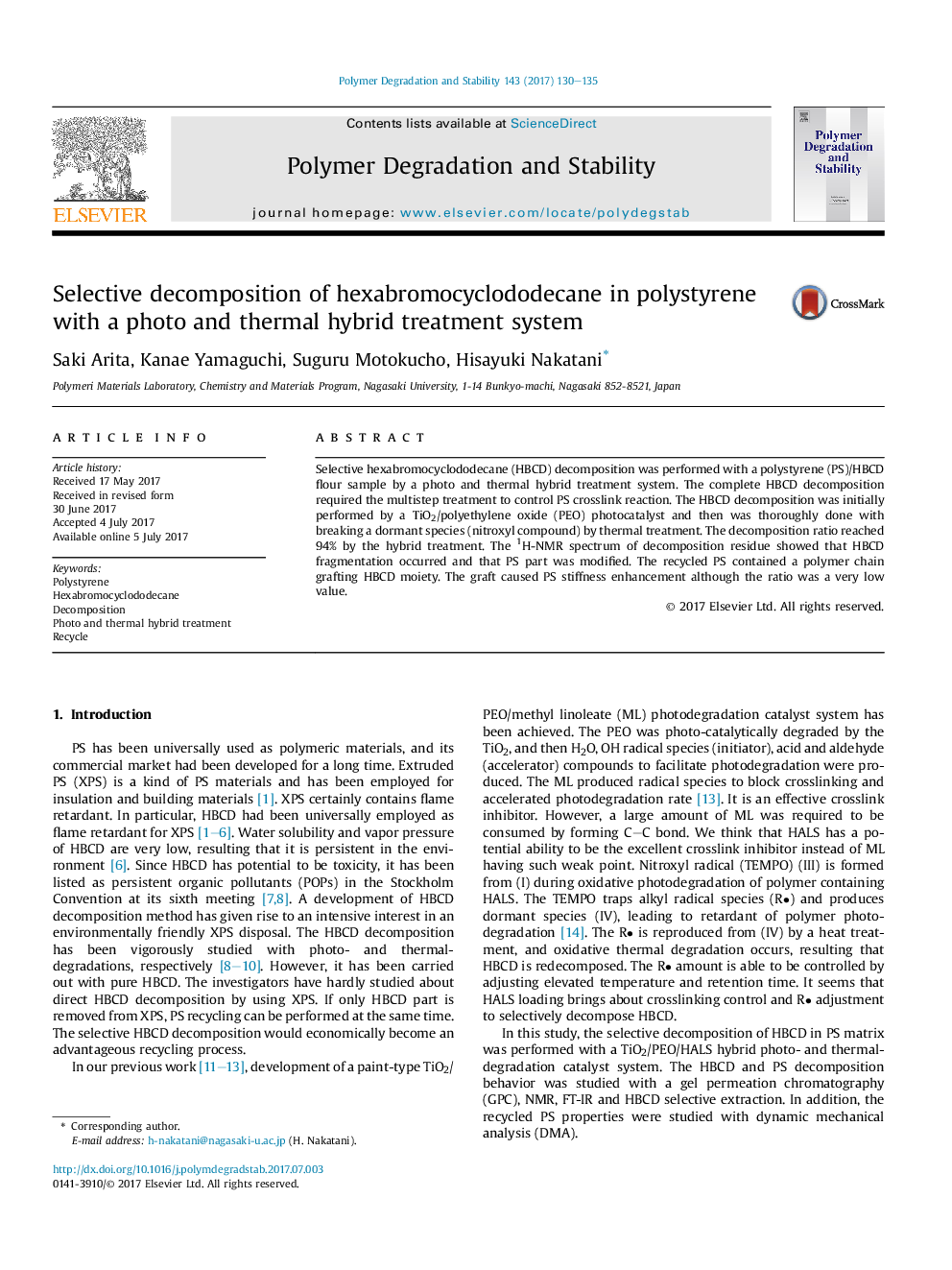| Article ID | Journal | Published Year | Pages | File Type |
|---|---|---|---|---|
| 5200708 | Polymer Degradation and Stability | 2017 | 6 Pages |
Selective hexabromocyclododecane (HBCD) decomposition was performed with a polystyrene (PS)/HBCD flour sample by a photo and thermal hybrid treatment system. The complete HBCD decomposition required the multistep treatment to control PS crosslink reaction. The HBCD decomposition was initially performed by a TiO2/polyethylene oxide (PEO) photocatalyst and then was thoroughly done with breaking a dormant species (nitroxyl compound) by thermal treatment. The decomposition ratio reached 94% by the hybrid treatment. The 1H-NMR spectrum of decomposition residue showed that HBCD fragmentation occurred and that PS part was modified. The recycled PS contained a polymer chain grafting HBCD moiety. The graft caused PS stiffness enhancement although the ratio was a very low value.
